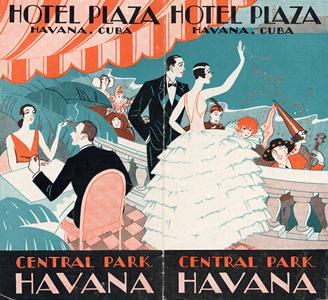Born March 2, 1917, Desiderio Alberto Arnaz y de Acha III became the symbol of America’s love affair with Cuba, the country from which his wealthy and prominent family fled in 1934.
Ironically, the original TV run of “I Love Lucy,” in which Desi Arnaz played bandleader Ricky Ricardo, nearly coincided with the dictatorship of Fulgencio Batista, who led the revolt that sent Arnaz’s family – and many others – into exile in Miami.
During the Desilu decade of the 1950s, Cuba was the “Holiday Isle of the Tropics,” 90 miles from Key West. Havana was the Latin Las Vegas.
An earlier wave of Cuba tourism lasted from the 1920s through the early 1930s, the Prohibition years, when famous and infamous Americans went to Cuba to drink, gamble, golf, fish and perhaps sin. After a few visits, Ernest Hemingway bought his winter retreat, Finca Vigía, in 1940. It is now a museum, a mandatory stop along with his favorite Havana bars, La Floridita (for daiquiris) and La Bodeguita del Medio (for mojitos).
But since the 1959 revolution led by Fidel Castro – now aged 88 and ailing, having stepped down from Communist Party leadership in 2011 – Cuba became known as a police state rather than a vacation paradise. Along with others, the politically powerful Cuban exile community in the United States made sure that economic sanctions, including a travel embargo, remained in effect.
Then, on Dec. 17, President Obama announced a move to reestablish diplomatic relations with Cuba, following negotiations (with the assistance of Pope Francis) that led to the release of American Alan Gross, imprisoned since Dec. 2009, in exchange for three Cuban agents.
Unimpeded travel to Cuba from the U. S. will require Congressional approval. However, several regulatory changes will make things easier. For instance, U.S.-based credit and debit cards will now be accepted in Cuba, and U.S. travelers will be able to bring home up to $400 worth of Cuban goods.
The U.S. government will also issue what are called general licenses, for citizens who wish to travel for humanitarian reasons, to perform or compete and for other specific purposes. Currently, only special licenses, requiring an arduous application process, are available. Americans who travel to Cuba without a license or through a travel provider that is not licensed by the Department of the Treasury are breaking the law and risk substantial fines.
The regulatory amendments putting these changes into effect are supposed to be issued “in the coming weeks.” More information may be found online at treasury.gov/resource-center/sanctions/Programs/pages/cuba.aspx, where there is a link to sign up for Cuba Sanctions email updates.
In the meantime, the easiest, if expensive, legal option to visit Cuba is through a “people-to-people” group tour organized by an authorized travel provider, either open to the public or under the auspices of a university, a museum or another nonprofit.
The Cuban government has been investing in tourism since the 1990s, restoring sections of Old Havana and building resort hotels with foreign, but not American, partners. Capacity is limited, and most facilities have not been modernized.
By far the largest source of international visitors to Cuba – nearly a million per year – is Canada, whose citizens tend to go to Varadero, about 14 miles east of Havana, for inexpensive beach and nature vacations. While around 650,000 U.S. citizens visit annually, the vast majority are Cuban Americans with visas to visit family members.
Over the next few years, there will be a strong curiosity factor. Americans will seek to feel the aura of Capone, Hemingway and Sinatra, gawk at the vintage cars, visit unfamiliar beaches and see for themselves what the country and the people are like.
After a few years of opening to America, and, presumably, a surge when the ban is finally lifted, the place that Cuba will come to occupy in the panoply of Caribbean destinations is unknown.
But wouldn’t it be nice to toast Desi’s 100th birthday with rum and cigars in Santiago de Cuba, where both his father and grandfather were mayor?


